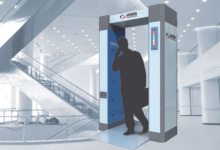Welding Automation Applications Across Different Industries

Welding automation is reshaping industries by providing faster, safer, and more consistent welding solutions than traditional methods. From automotive and aerospace to construction and shipbuilding, automated welding systems are being adopted to meet the growing demand for precision and efficiency.
By reducing errors, cutting labor costs, and boosting productivity, welding automation has become a vital tool across diverse sectors. This article explores the wide range of applications of welding automation and how it continues to transform modern manufacturing.
Key Benefits of Welding Automation
Increased Productivity
Automated welding machines can operate continuously without fatigue, unlike human welders. This allows more work to be completed in less time.
Enhanced Consistency and Quality
Robots and automated systems deliver precise, uniform welds every time. This reduces defects such as cracks or weak joints, ensuring reliable results. Consistent high-quality welds are particularly important in industries like aerospace and shipbuilding, where safety and performance are important.
Lower Labor Costs
Automation takes over repetitive and labor-intensive tasks, reducing overall labor expenses. Workers can then focus on higher-value activities, such as programming, inspection, and machine maintenance, maximizing the efficiency of skilled personnel.
Improved Safety
Welding exposes workers to hazards like fumes, extreme heat, UV radiation, and heavy equipment. Automated systems perform these dangerous tasks, minimizing the risk of injury.
Material and Energy Efficiency
Automated welding precisely controls heat, speed, and material usage, reducing waste and energy consumption. This improves cost efficiency and lowers environmental impact. Industries such as electronics and stainless steel fabrication benefit significantly from reduced scrap rates.
Capability for Complex Welds
Modern robotic welding systems can handle intricate and challenging welds that are difficult for humans. They can perform multi-layer welds, weld 3D shapes, and work with thin materials. This allows manufacturers to create complex designs consistently and reliably.
Better Process Monitoring and Control
Automation allows real-time monitoring of welding parameters and performance. Machines can detect and correct issues immediately, reducing rework and ensuring high-quality output. Collected data can also be used for process optimization and predictive maintenance, improving long-term efficiency.
See also: Future of security screening: balancing tech innovations and privacy
Industry-Specific Applications
Manufacturing – General Industrial Use
In general manufacturing, robots are used to make welding faster and more precise. Unlike manual welding, robots can follow complicated patterns exactly, which helps maintain consistent quality. They can:
- Track the seams carefully to ensure the weld is applied in the correct position.
- Adjust welding power automatically depending on the metal’s thickness or type.
- Move in different directions to reach tricky or unusual shapes.
Sensors monitor the welding process and send information to the robot, which can adjust the torch immediately. This helps prevent mistakes, avoids heat damage to the metal, and produces higher-quality welds. Industries such as heavy machinery, steel structures, and pressure vessels benefit the most because they need strong, precise, and consistent welds.
Automotive – Vehicle Assembly Lines
Car manufacturing relies heavily on robots to keep up with both high production and strict quality standards. On modern assembly lines:
- Multiple robots work together to weld car frames and body parts.
- Different welding methods such as spot, MIG, and laser welding are used for different parts.
- Robotic arms apply consistent force and angle for each weld, making cars uniform.
- Cameras and sensors detect misalignments and fix them instantly to avoid weak spots or metal fatigue.
Robots can also weld advanced materials like high-strength steel and aluminum, which are hard to weld manually but are needed to make cars lighter and safer. This results in safer cars, better fuel efficiency, and consistently high quality.
Aerospace and Defense – Safety-Critical Components
Welding in aerospace and defense is extremely important because parts must withstand high stress, heat, and pressure. Robots help by:
- Providing sub-millimeter accuracy to make welds strong and reliable.
- Controlling temperature precisely to avoid warping or weakening the metal.
- Recording every weld for quality checks and safety verification.
These systems are used for rocket engines, airplane fuselages, turbine parts, and other critical components. Automation reduces human error, ensures uniform quality, and allows the welding of special alloys that are difficult to handle manually.
Factors for Successful Implementation
Introducing robotic welding into a production process requires careful planning. Here are the key factors to ensure a smooth and effective transition:
Production Needs and ROI
Before investing in welding automation, businesses should evaluate whether their production volume and task type justify it. Automation is most valuable for high-volume, repetitive tasks or jobs that require high precision. A careful cost-benefit analysis is essential:
- Costs include purchasing robots, integrating them into existing systems, training staff, and ongoing maintenance.
- Savings result from reduced labor, fewer errors, less scrap, and decreased downtime.
- ROI calculation helps determine how long it will take for the savings to cover the initial investment, ensuring the decision is financially sound.
Infrastructure and Workspace
Welding robots need a well-prepared workspace to operate efficiently and safely:
- Adequate space is necessary for robot movement, part loading/unloading, and maintaining safety zones.
- Utilities like stable power, shielding gas, and proper ventilation are essential for safe, high-quality welding.
- Integration involves planning how robots will fit into existing production lines, inspection stations, and material handling processes to keep the workflow smooth.
Operator Training
Even the most advanced robots require skilled operators:
- Comprehensive training ensures operators understand both welding techniques and robot operation, including programming, welding parameters, and safety procedures.
- User-friendly interfaces on modern robots reduce the learning curve, allowing operators to program and control robots more easily.
- Continuous learning helps employees stay up to date with new technologies, making them more adaptable and ensuring the robots are used effectively.
Maintenance and Support
Proper maintenance and support are critical to keep robots running reliably:
- Routine maintenance, including cleaning and inspections, keeps robots efficient and extends their lifespan.
- Technical support ensures problems can be resolved quickly, minimizing downtime.
- Spare parts management means keeping critical components on hand for quick replacement, preventing production delays.
Careful planning ensures effective welding automation, improving productivity, weld quality, and workplace safety.
Future Trends in Welding Automation
The welding industry is rapidly evolving thanks to advances in technology. Key trends shaping the future of welding automation include:
AI and Machine Learning
Welding robots are becoming smarter with AI and machine learning. They can monitor parameters like arc stability and joint alignment in real time and make automatic adjustments. This improves weld quality, reduces errors, and minimizes downtime.
Collaborative Robots (Cobots)
Cobots are designed to work safely alongside humans without the need for large safety cages. They handle repetitive welding tasks, allowing workers to focus on more complex operations. Cobots are particularly valuable for small and medium-sized businesses due to their flexibility, ease of setup, and affordability.
Energy-Efficient and Eco-Friendly Systems
Modern welding machines use energy-saving technologies, such as inverter-based systems, to cut power consumption and reduce waste. This not only lowers operating costs but also makes welding more environmentally friendly.
Expansion to Small and Medium-Sized Manufacturers
Automation isn’t limited to large factories anymore. Small and medium-sized businesses can now adopt compact, cost-effective robots to boost efficiency, enhance product quality, and stay competitive in the market.
The future of welding automation is smarter, safer, more efficient, and accessible to all manufacturers.






